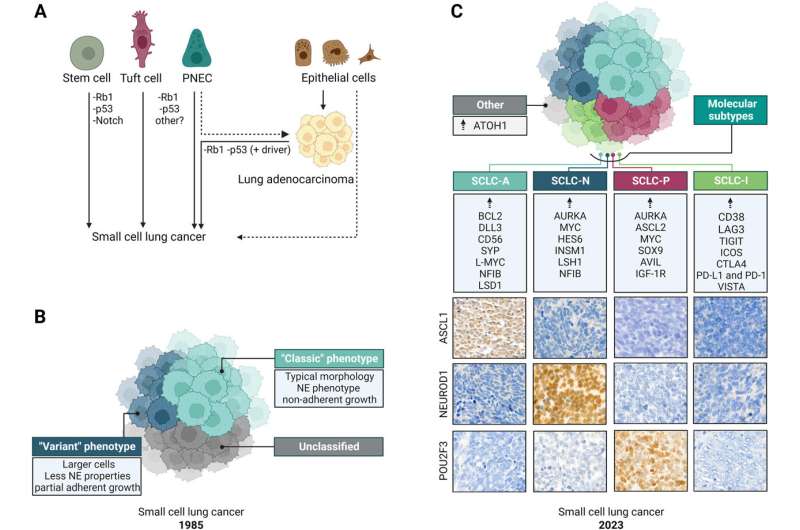This article has been reviewed according to Science X's editorial process and policies. Editors have highlighted the following attributes while ensuring the content's credibility:
fact-checked
trusted source
proofread
Comprehensive overview provides clinical insights into small cell lung cancer

Small-cell lung cancer is a particularly aggressive type of tumor with a consistently high mortality rate. In recent years, the research of scientists at MedUni Vienna's Department of Thoracic Surgery has significantly contributed to a better understanding and new therapeutic approaches in this malignant disease. Their comprehensive overview of new insights and advances in small-cell lung cancer has just been published in CA: A Cancer Journal for Clinicians.
The key findings of Balazs Döme's team from the Department of Thoracic Surgery at MedUni Vienna primarily consist of new insights into the biology and heterogeneity of small-cell lung cancer (SCLC). In collaboration with colleagues from Sweden, the Czech Republic, Hungary, and the United States, the researchers previously demonstrated that SCLC can be categorized into different subgroups which are associated with varying clinical behaviors and potentially new therapeutic strategies.
They also demonstrated that certain combinations of multiple drugs represent a particularly promising therapeutic approach in patients with characteristic molecular SCLC profiles.
Approximately 15% of lung cancer patients are affected by small-cell lung cancer. This particularly aggressive tumor, which usually occurs in smokers, grows rapidly, has an increased tendency to metastasize, and a high mortality rate.
According to Balazs Döme, conventional therapies have reached their plateau of effectiveness in SCLC. "With our research work, we have already created the basis for the development of targeted, personalized therapeutic approaches, which we now want to advance further," Döme states, announcing further research.
More information: Zsolt Megyesfalvi et al, Clinical insights into small cell lung cancer: Tumor heterogeneity, diagnosis, therapy, and future directions, CA: A Cancer Journal for Clinicians (2023). DOI: 10.3322/caac.21785



















